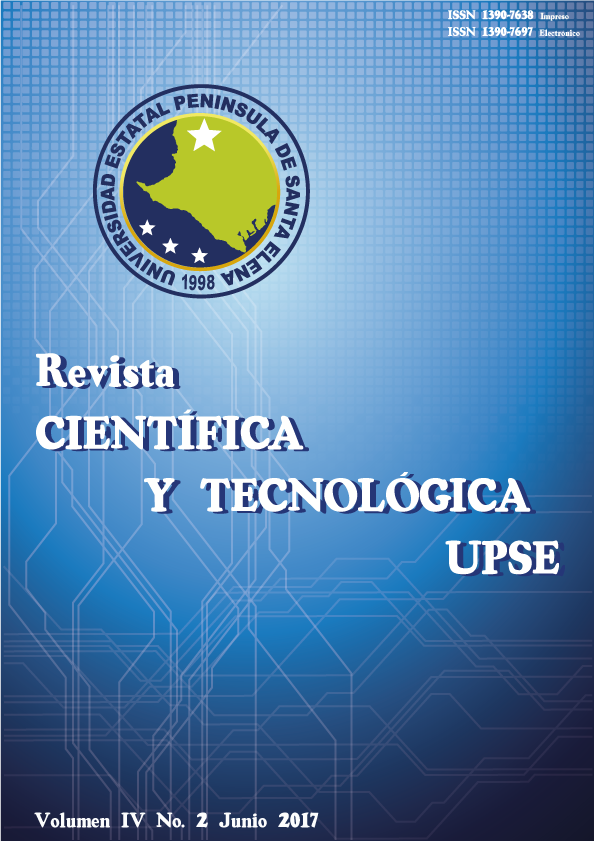Emprendimiento y el rol de la mujer. Caso ecuatoriano
DOI:
https://doi.org/10.26423/rctu.v4i2.215Palabras clave:
Emprendimiento, responsabilidad social, MujerResumen
La ubicación de las mujeres dentro de mercados de producción y laboral ha presentado limitaciones serias, marcadas por la discriminación y estereotipos, interfiriendo en la inserción laboral de las mismas, siendo su mano de obra menos valorada que la de los hombres; evidenciándose la necesidad de mejorar su inserción y generar nuevas fuentes de trabajo; se han propuesto unidades de negocios impulsando la generación de emprendimientos que permitan incrementar de manera paulatina los ingresos del núcleo familiar. El objetivo del presente trabajo es mostrar el término emprendimiento desde el punto de vista conceptual, entendiéndose que por emprendimiento se derivan algunas teorías que permiten observar que es una característica que permite a las personas salir adelante con ideas novedosas, metodológicamente se realiza un análisis de las principales características que tienen los emprendedores observando que la edad promedio de una persona que se inicia de manera temprana en el emprendimiento es de 36 años, a pesar que a lo largo de los años ha existido una paridad al momento de emprender entre los hombres y mujeres, se observar el emprendimiento sucede con mayor proporción en las mujeres 51,1%. El emprendimiento femenino se está volviendo protagonista de la economía nacional. El Global Entrepreneurship Monitor (GEM) reporta que, en Ecuador, aproximadamente, el 54% de ellas piensan en ser microempresarias en los próximos tres años.
Descargas
Referencias
Carrión, D. S. El MIES rinde cuentas y se proyecta a futuro. MIESpacio. 2014
ESPAE, Graduate School of Management. Global Entrepreneurship Monitor (GEM). Ecuador. 2015.
Gallardo, L., & Nopo, H. Ethnic and Gender wage gaps in Ecuador. Inter-American Development Bank. 2009. [Citado 20 de mayo 2016]; 679. Disponible en: https://publications.iadb.org/bitstream/handle/11319/1646/Ethnic%20and%20Gender%20Wage%20Gaps%20in%20Ecuador.pdf?sequence=1&isAllowed=y
Gómez, L. A. Teorías del Emprendimiento. 2016. [Citado 09 de septiembre de 2016]; Disponible en: http://aulavirtual.tecnologicocomfenalcovirtual.edu.co/aulavirtual/pluginfile.php/520365/mod_resource/content/1/TEORIAS%20DEL%20EMPRENDIMIENTO.pdf
Grisales, C. P. Concepto y definición de emprendimiento. 2016. [Citado 09 de septiembre de 2016]; Disponible en: https://docs.google.com/document/d/193dA3n2hw2-k3NR6hcjx9pOzvE9kYy9GNtZcLZu_Dn8/edit
Hoselitz, B. F. Theories of Stages of Economic Growth. Theories of Economic Growth. 1960.
Jaramillo, L. Emprendimiento: Concepto básico en competencias. Lumen. 2008. [Citado 06 de Septiembre de 2016]; Disponible en: https://guayacan.uninorte.edu.co/divisiones/iese/lumen/ediciones/7/articulos/emprendimiento.pdf
Kirzner, I. COMPETITION AND ENTREPRENEURSHIP. THE UNIVERSITY OF CHICAGO PRESS. 1973HombreMujer0,00%25,00%50,00%75,00%100,00%TEAEstablecidos48,90%60,10%51,10%39,90%Distribución por Género Hombre Mujer Palma M./Garcés F./Valencia G./Wasbrum W. 51
Lideres. El emprendimiento femenino es motor de transformación. Lideres. 2015. [Citado 08 de Septiembre de 2016]; Disponible en: http://search.proquest.com/docview/1686054449?
Radcliffe, S. El género y la etnicidad como barreras para el desarrollo: Mujeres indígenas, acceso a recursos en Ecuador en perspectiva Latinoamericana. EUTOPIA: El Desarrollo Económico Territorial. 2014. 5. Disponible en: revistas.flacsoandes.edu.ec/eutopia/article/download/1486/1240
Schumpeter, J. Análisis del cambio económico. (E. F. económica, Ed.) Ensayos sobre el ciclo económico. 1934
Descargas
Publicado
Número
Sección
Licencia
El titular de los derechos de autor de la obra, otorga derechos de uso a los lectores mediante la licencia Creative Commons Atribución-NoComercial-CompartirIgual 4.0 Internacional. Esto permite el acceso gratuito inmediato a la obra y permite a cualquier usuario leer, descargar, copiar, distribuir, imprimir, buscar o vincular a los textos completos de los artículos, rastrearlos para su indexación, pasarlos como datos al software o usarlos para cualquier otro propósito legal.
Cuando la obra es aprobada y aceptada para su publicación, los autores conservan los derechos de autor sin restricciones, cediendo únicamente los derechos de reproducción, distribución para su explotación en formato de papel, así como en cualquier otro soporte magnético, óptico y digital.












